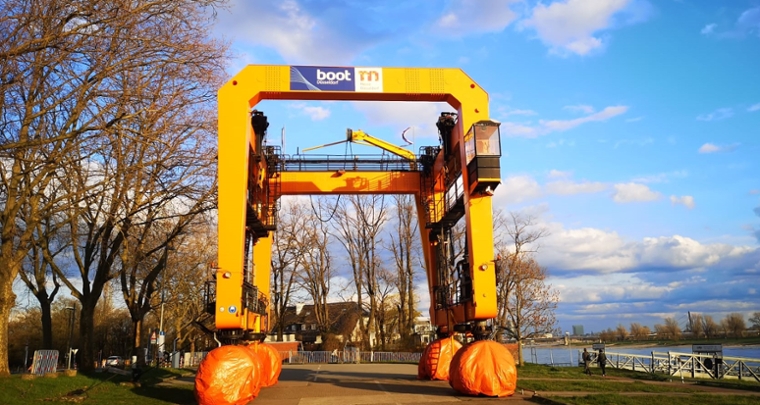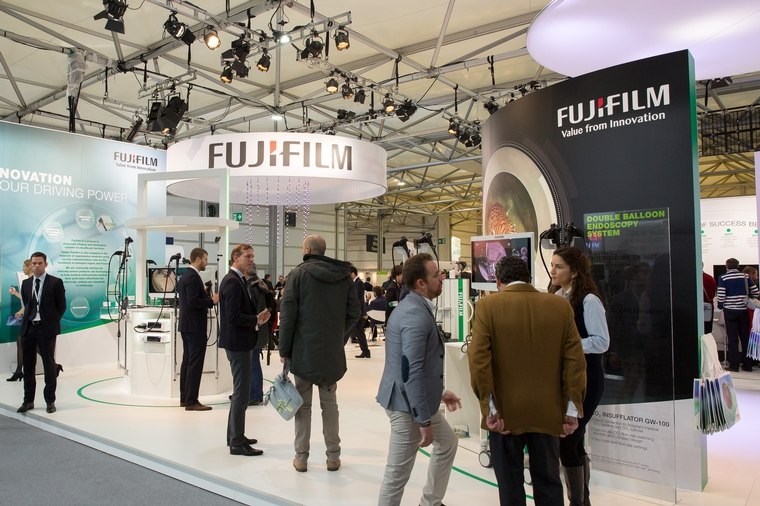Opportunity or Risk? Trade Fairs, Corona & Restart

Let's be honest: Are trade fairs still in keeping with the times? Or are trade fairs marketing dinosaurs and Corona is - rightly - doing away with this format? The majority of exhibitors seem to be in fundamental agreement on this question. According to a study recently conducted by Messe Frankfurt and published in the Handelsblatt of 10.08.21, 67 % of exhibitors want to exhibit at "their" fair again. For them, despite or precisely because of the pandemic experience, the fair remains an important pillar in their marketing. Added to this are another 30 % who would like to have a digital supplement in addition to the physical trade fair. Only 3% of the companies can imagine a purely digital format. So the figures clearly answer the question: trade fairs continue to be perceived as contemporary.
What if the pandemic were over today?
If the pandemic were over today: The physical trade fair would be making a big comeback. However, it would no longer be the same. It would be transformed, have a contemporary face: there would be digital extensions for even more reach. That would be the real reboot of the fairs.
Trade fairs under pandemic conditions. What it means.
Now, unfortunately, the pandemic has not yet been defeated and we continue to live in uncertain times. So now that fairs are generally allowed again, exhibitors have to decide: Do they want to exhibit or not? Now - under pandemic conditions?
What does it even mean for companies to exhibit at a fair under pandemic conditions? In a nutshell: a corona-compliant trade fair is a kind of "trade fair light". Because it brings fewer visitors into the halls due to the applicable distance rules of 7 m² per person, and for the same reason demands compromises for its own stand construction. That's about it. Oh yes: stand parties are also prohibited, of course.
Stop, stop, you may think! What about Delta? What about the fear of infection?
Organisers make fairs safe.
As far as keeping people safe at fairs is concerned: organisers have done a great job there. After a steep learning curve, they have invested a lot in their hygiene concept. Ventilation systems have been adapted to the needs, walkways have been designed in a one-way system where security guards keep an eye on things. 
Probably, quite honestly, thanks to the profound work of trade fair organisers, few places are as safe as trade fairs. What's more, both trade fair visitors and exhibitors are all very disciplined people who abide by the accepted rules, if only in their own interest.
To be there or not to be there. That is the question here.
And now the exciting question: How do the companies decide under these conditions? The answer is: they are clearly divided. There are those for whom a "Trade Fair Light" is not enough. This group will postpone their participation until next time. And there are those who smell a morning breeze and definitely want to seize their chance now to be there again. A look at the figures for the autumn fairs Anuga in Cologne or A+A in Düsseldorf, for example, confirms this: compared to the level of the previous event, 50% of the participation figures are achieved.
Both groups have good reasons for their respective decisions. And for both groups - apart from health considerations - the expectation of profit plays the decisive role. For one group, the profit expectation is too low - for them, fewer people at the fair also means fewer chances to make contacts or close deals. And for the other group, the profit expectation is high because they will finally have personal contacts again and can present their products appropriately and live.
Every decision involves risks. But only one decision has a chance of winning.
Both decisions, by the way, are as understandable as they are courageous. Because both groups risk losing something: One group risks losing market share by not participating. The other group risks losing invested resources in case the fair falls short of expectations due to the restrictions or even has to be cancelled altogether as a result of a situation that worsens again.
Which decision is the better one depends entirely on the respective business model. And it also depends on whether the companies have found other ways to get in touch with their target group or to stay in touch. In this respect, there can be no blanket right or wrong.
However, the group that decides to participate, despite all the risk, has a very decisive advantage: only it has any chance of winning.
All the best - and stay healthy!
Yours, Petra Hallmann